-
How does it feel?
If you have ever been lucky enough to find Reishi in the wild, you will know that sense of wonder of finding the glistening fungi in the forest. However, much of the Reishi available today is grown on food substrates in special mushroomeries. This has led to a range of products including the mycelium, extra-cellular metabolites as well as fruiting bodies. A huge range of extract exists including ones that use combinations of water and alcohol extracts for maximum utilisation of the alcophilic triterpenoids and hydrophilic polysaccharides exist. So, depending on what form you experience it in, the taste can vary from sweeter to much more bitter. Once past the bitterness it has an immediate grounding and soothing effect.
-
What can I use it for?
Reishi is also known as Ling Zhi, The Mushroom of Immortality, and was revered by the Chinese for its positive tonifying effects. β-glucans help to prime a weakened immune system, enhancing protection from repeated acute infections as well as more chronic immune disorders; increasing T-lymphocytes, TNF-α, IL-1-β, IL-2, and IL-6 production. As well as medicinal mushrooms, β-glucans are also found as the brown spots on apples and pears, and actively prime the immune system.
-
Traditional uses
Allergies, liver support, cancer (especially breast and prostate), hypertension, anxiety/insomnia. Together with Cordyceps sinensis, G. lucidum has the most extensive range of indications and combines well with it in treatment of lung and liver conditions, as well as to provide all-round adaptogenic support. Supports Heart Shen and Lung Qi.
-
Traditional actions
Herbal actions describe therapeutic changes that occur in the body in response to taking a herb. These actions are used to express how a herb physiologically influences cells, tissues, organs or systems. Clinical observations are traditionally what have defined these actions: an increase in urine output, diuretic; improved wound healing, vulnerary; or a reduction in fever, antipyretic. These descriptors too have become a means to group herbs by their effects on the body — herbs with a nervine action have become the nervines, herbs with a bitter action are the bitters. Recognising herbs as members of these groups provides a preliminary familiarity with their mechanisms from which to then develop an understanding of their affinities and nuance and discern their clinical significance.
-
Traditional energetic actions
Herbal energetics are the descriptions Herbalists have given to plants, mushrooms, lichens, foods, and some minerals based on the direct experience of how they taste, feel, and work in the body. All traditional health systems use these principles to explain how the environment we live in and absorb, impacts our health. Find out more about traditional energetic actions in our article “An introduction to herbal energetics“.
Western energetics
Chinese energetics
-
What practitioners say
 Cancer
CancerG. lucidum has a long history of traditional use in the treatment of cancer and is credited with many cases of spontaneous remission (22, 23). As well as the immune modulating effect of its high polysaccharide content, its triterpenes show significant cytotoxic activity against different cancer cell lines, as well as inhibitory effects against Epstein-Barr virus, known to be associated with some cancers (24-35). In addition triterpenes from G. lucidum show inhibition of the nuclear transcription factor, NF-kappaB (NF-kB), which is overexpressed in various cancer cell lines, and also theAP-1 signalling pathway (36).
Inhibition of NF-kB is of particular importance in the activity of G. lucidum against breast and prostate cancers as it is considered to play an essential role in the hormone independent growth and spread of these cancers (37,38). In addition G. lucidum triterpenes have been shown to block the androgen receptor on prostate cancer cells, supporting G.lucidum’s use in the treatment of prostate cancer.
Clinical studies with G. lucidum polysaccharide extract confirm its ability to enhance immune status in cancer patients with increases in NK cell activity and Th1 cytokine levels and decreases in Th2 cytokine levels in advanced lung cancer patients, and reduction in side effects when given alongside chemotherapy and radiotherapy (39-41).
In vitro and in vivo studies also indicate significant anti-tumour activity for the triterpenerich G. lucidum spore powder and spore oil5, (42-46). A randomized controlled trial of 48 breast cancer patients reported reductions in fatigue, anxiety and depression in the treatment group (3g/day G. lucidum spore powder), together with improvements in immune parameters (47).
Allergies
As well as immunomodulatory activity, G. lucidum demonstrates strong anti-inflammatory activity with suppression of tumour necrosis factor-alpha (TNF-alpha), interleukin-6 (IL-6), the inflammatory mediator nitric oxide (NO) and prostaglandin E2, mediated through inhibition of the NF-kB andAP-1 signaling pathways. This combination of immunomodulatory and anti-inflammatory activity contributes to its efficacy in the treatment of allergies and other inflammatory conditions (48-51). G. lucidum is a component of FAHF-2, a Chinese herbal formula that has been reported to completely block anaphylactic reactions in a mouse model of peanut allergy (52).
Liver disease
The fruiting body of G. lucidum has long been a popular traditional treatment for liver diseases and demonstrates wide hepatoprotective properties (53-59). It appears that at least part of its action in this regard may be through the ability of G. lucidum triterpenes to block platelet-derived growth factor beta receptor (PDGFbetaR), thus inhibiting the activation and proliferation of hepatic stellate cells, a key event in hepatic fibrosis (60). G. lucidum is also traditionally used in the treatment of hepatitis and in a clinical study of 355 cases of hepatitis B treated with Wulingdan Pill, of which G. lucidum is the major component, 92.4% of patients were reported to have positive results (61). Again, it appears that triterpenes are the key components (62,63).
Hypertension
G. lucidum has a broad range of action on cardiovascular health. Polysaccharides and triterpenes isolated from G. lucidum have shown hyperlipidaemic, hypotensive, and anti-thrombotic effects while a polysaccharide preparation (Ganopoly) led to improved ECG and lowered chest pain, palpitation and shortness of breath in a double-blind, randomized, multi-centre study64. MildACE-inhibitory activity has also been demonstrated for some of G. lucidum’s triterpenoid compounds (65,66).
Insomnia / Anxiety
The traditional name ‘spirit mushroom’ points to the sedative action of its triterpenoid components and many herbalists value its benefits in cases of insomnia. Christopher Hobbs recommends G. lucidum for deficiency insomnia while Mizuno recommends it for ‘mental stabilisation’ (67-70).
Rheumatoid arthritis
G. lucidum’s combination of immuno-modulatory and anti-inflammatory action suggests potential application in the treatment of autoimmune conditions such as rheumatoid arthritis and a proteoglycan fraction from G. lucidum has been shown to inhibit production of rheumatoid arthritis synovial fibroblasts in vitro, in part through inhibition of the NF-kB transcription pathway (71).
Neuro-protective
Traditionally considered to promote longevity, G. lucidum extract has been shown to inhibit beta-amyloid synaptic toxicity with potential benefits in Alzheimer’s disease (72). Both polysaccharides and triterpenes from G. lucidum exhibit neuroprotective and anticonvulsant effects at levels of 10-80mg/kg while G. lucidum spores have shown ability to protect neurons from apoptosis and improve cognitive dysfunction in vivo (73-77).
Anti-ageing
Traditionally known as the ‘mushroom of immortality’, G. lucidum’s broad-spectrum cardiovascular, neurological and immunological benefits, together with its support for blood sugar and cholesterol control (79-82), contribute to its anti-ageing properties.
-
Did you know?
300mg of β-glucans is the accepted clinically effective dose. β-glucans bind to specific membrane receptors of phagocytic cells stimulating innate natural killer cells that fight off invading antigens. β-glucans also stimulate the growth of bone marrow megakaryocytes and progenitor cells which develop into platelets, blood and immune cells. In immunologically compromised people, Reishi will increase T-lymphocyte and T-helper cells whilst decreasing T-suppressor cells. It will also improve immune competency after chemo- and/or radiation therapies.
Additional information
-
Botanical description
The most famous of all the medicinal mushrooms with annual sales of over US$2billion, G. lucidum’s wide-ranging health benefits are due to its combination of high polysaccharide content (Stamets reports the fruiting body to contain 41% beta-glucan) and triterpenoid compounds (1,2,3,4). Over 130 of these have been identified, belonging primarily to two families: ganoderic and lucidenic acids with functions including:
- Inhibiting histamine release
- Hepatoprotective
- Anti-hypertensive (ACE inhibiting)
- Inhibiting cholesterol synthesis
- Anti-inflammatory
- Inducing apoptosis
- Inhibiting viral induction
- Antioxidant
- Anti-tumour
- CNS sedation
- Antimicrobial
- Immune modulation
-
Common names
- Reish
- Mannetake (10,000 year mushroom)
- Ling Zhi (spirit mushroom/mushroom of spiritual potency)
-
Safety
Patients on anti-coagulantmedication should bemonitored due to G.lucidum’s actions in this area although a study of G. lucidum supplementation (1.5g/day) in healthy volunteers showed no effect on haemostatic function (85,86).
-
Dosage
Traditional materia medica recommend a dose range for crude G. lucidum of 3-15g/day in decoctions or 1.5-3g as powder or in pills while doses of up to 30g/day have been reported and 5.4g/day of polysaccharide extract and 3.0g/day and G. lucidum spore powder have been used in clinical trials (23,47,82-84).
Dose range for dual-extraction products combining polysaccharide-rich hot-water and triterpene-rich ethanolic (alcohol-based) extracts is typically 1-3g/day while 500-1,000mg/day is normal for G. lucidum spore oil products.
-
Constituents
Key components: Triterpenes and polysaccharides.
Levels of triterpenes are particularly high in G. lucidum spores, typically >2.0% in shellbroken spore powder and >30% in the spore oil and recent studies report promise for the spores and spore oil as anti-cancer and neuroprotective agents (5-8).
G. lucidum shows exceptionally high tyrosinase inhibition with the highest activity in the aqueous extract. This has led to its inclusion in many commercial skin whitening products and has medical implications, especially in relation to Parkinson’s Disease (see discussion under Parkinson’s Disease) (9-11).
A number of related species have also been investigated with polysaccharides and triterpenes from both Ganoderma tsugae and Ganoderma applanatum showing similar anti-tumour, anti-inflammatory, immune-modulatory and hepatoprotective activity to those from G. lucidum and Ganoderma japonicum showing neuroprotective properties (12-21).

-
References
- Willard T: Reishi mushroom: herb of spiritual potency and medical wonder. Issaquah, WA : Sylvan Press, 1990.
- Global marketing of medicinal ling zhi mushroom Ganoderma lucidum (W.Curt.:Fr.) Lloyd (Aphyllophoromycetideae) products and safety concerns. Lai T, Gao YH, Zhou SF. Int J Med Mushrooms. 2004;6(2):189–194.
- Ganoderma lucidum and its pharmaceutically active compounds. Boh B, Berovic M, Zhang JS, Lin ZB. Biotechnol Annu Rev. 2007;13:265–301.
- Ganoderma – a therapeutic fungal biofactory. Paterson RR. Phytochemistry. 2006;67(18):1985–2001.
- Antitumor activity of the sporoderm-broken germinating spores of Ganoderma lucidum. Liu X, Yuan JP, Chung CK, Chen XJ. Cancer Lett. 2002;182(2):155–161.
- Sterols and triterpenoids from the spores of Ganoderma lucidum. Zhang CR, Yang SP, Yue JM. Nat Prod Res. 2008;22(13):1137–1142.
- Chemical constituents of the spores of Ganoderma lucidum. Zhang XQ, Pang GL, Cheng Y, Wang Y, Ye WC. Zhong Yao Cai. 2008;31(1):41–44.
- Comparative studies on the immunomodulatory and antitumor activities of the different parts of fruiting body of Ganoderma lucidum and Ganoderma spores. Yue GG, Fung KP, Leung PC, Lau CB. Phytother Res. 2008;22(10):1282–1291.
- Inhibition of tyrosinase from Ganoderma lucidum. Chu HL,Wu HC , Yen-Chin Chen YC, Kuo JM. 12th World Food Congress. 2003;166(2):117–120.
- Effects on tyrosinase activity by the extracts of Ganoderma lucidum and related mushrooms. Chien CC, Tsai ML, Chen CC, Chang SJ, Tseng CH. Mycopathologia. 2008;166(2):117–120.
- Dopamine- or L-DOPA-induced neurotoxicity: the role of dopamine quinone formation and tyrosinase in a model of Parkinson’s disease. Asanuma M, Miyazaki I, Ogawa N. Neurotox Res. 2003;5(3):165–176.
- Effect of polysaccharides from Ganoderma applanatum on immune responses. I. Enhancing effect on the induction of delayed hypersensitivity in mice. Nakashima S, Umeda Y, Kanada T. Microbiol Immunol. 1979;23(6):501–513.
- Antitumor active protein-containing glycans from the Chinese mushroom songshan lingzhi, Ganoderma tsugae mycelium. Zhang J, Wang G, Li H, Zhuang C, Mizuno T, Ito H, Mayuzumi H, Okamoto H, Li J. Biosci Biotechnol Biochem. 1994;58(7):1202–1205.
- Effect of Ganoderma tsugae on chronically carbon tetrachloride intoxicated rats. Wu YW, Chen KD, Lin WC. Am J Chin Med. 2004;32(6):841–850.
- Effects of triterpenoid-rich extracts of Ganoderma tsugae on airway hyperreactivity and Th2 responses in vivo. Chen ML, Lin BF. Int Arch Allergy Immunol. 2007;143(1):21–30.
- A comparison study on the physical/chemical properties and immunomodulatory activities of mycelial polysaccharide extracts from five Ganoderma species. Chen CF, Yang XT, Li XQ, Mi K, Yang QY. Wei Sheng Wu Xue Bao. 2007;47(4):628–633.
- Antiinflammatory triterpenoids and steroids from Ganoderma lucidum and G. tsugae. Ko HH, Hung CF, Wang JP, Lin CN. Phytochemistry. 2008;69(1):234–239.
- Ganoderma applanatum: a promising mushroom for antitumor and immunomodulating activity. Jeong YT, Yang BK, Jeong SC, Kim SM, Song CH. Phytother Res. 2008;22(5):614–619.
- Ganoderma tsugae extracts inhibit colorectal cancer cell growth via G2/M cell cycle arrest. Hsu SC, Ou CC, Li JW, Chuang TC, Kuo HP, Liu JY, Chen CS, Lin SC, Su CH, Kao MC. J Ethnopharmacol. 2008;120(3):394–401.
- Ganoderma applanatum terpenes protect mouse liver against benzo(α)pyrene-induced oxidative stress and inflammation. Ma JQ, Liu CM, Qin ZH, Jiang JH, Sun YZ. Environ Toxicol Pharmacol. 2011;31(3):460–468.
- Ganoderma tsugae extract inhibits growth of HER2-overexpressing cancer cells via modulation of HER2/PI3K/Akt signaling pathway. Kuo HP, Hsu SC, Ou CC, Li JW, Tseng HH, Chuang TC, Liu JY, Chen SJ, Su MH, Cheng YC, Chou WY, Kao MC. Evid Based Complement Alternat Med. 2013;2013:219472.
- Anticancer effects of Ganoderma lucidum: a review of scientific evidence. Yuen JW, Gohel MD. Nutr Cancer. 2005;53(1):11–17.
- Regression of gastric large B-Cell lymphoma accompanied by a florid lymphoma-like T-cell reaction: immunomodulatory effect of Ganoderma lucidum (Lingzhi)? Cheuk W, Chan JK, Nuovo G, Chan MK, Fok M. Int J Surg Pathol. 2007;15(2):180–186.
- Potential of a novel polysaccharide preparation (GLPP) from Anhui-grown Ganoderma lucidum in tumour treatment and immuno-stimulation. Pang X, Chen Z, Gao X, Liu W, Slavin M, Yao W, Yu LL. J Food Sci. 2007;72(6):S435–442.
- Cytotoxic triterpenoids from Ganoderma lucidum. Cheng CR, Yue QX, Wu ZY, Song XY, Tao SJ, Wu XH, Xu PP, Liu X, Guan SH, Guo DA. Phytochemistry. 2010;71(13):1579–1585.
- Triterpenes from Ganoderma lucidum induce autophagy in colon cancer through the inhibition of p38 mitogen-activated kinase (p38 MAPK). Thyagarajan A, Jedinak A, Nguyen H, Terry C, Baldridge L.A, Jiang J, Sliva D. Nutr Cancer. 2010;62(5):630–640.
- Ganoderic acid T inhibits tumour invasion in vitro and in vivo through inhibition of MMP expression. Chen NH, Liu JW, Zhong JJ. Pharmacol Rep. 2010;62(1):150–163.
- Inhibitory effects of Ganoderma lucidum on tumourigenesis and metastasis of human hepatoma cells in cells and animal models. Weng J, Chau CF, Yen GC, Liao JW, Chen DH, Chen KD. J Agric Food Chem. 2009;57(11):5049–5057.
- Cytotoxic lanostanoid triterpenes from Ganoderma lucidum. Guan SH, Xia JM, Yang M, Wang XM, Liu X, Guo DA. J Asian Nat Prod Res. 2008;10(7-8):705–710.
- The anti-invasive effect of lucidenic acids isolated from a new Ganoderma lucidum strain. Weng CJ, Chau CF, Chen KD, Chen DH, Yen GC. Mol Nutr Food Res. 2007;51(12):1472–1477.
- Lucidenic acids P and Q, methyl lucidenate P, and other triterpenoids from the fungus Ganoderma lucidum and their inhibitory effects on Epstein-Barr virus activation. Iwatsuki K, Akihisa T, Tokuda H, Ukiya M, Oshikubo M, Kimura Y, Asano T, Nomura A, Nishino H. J Nat Prod. 2003;66(12):1582–1585.
- Ganoderma lucidum polysaccharides: immunomodulation and potential anti-tumor activities. Xu Z, Chen X, Zhong Z, Chen L, Wang Y. Am J Chin Med. 2011;39(1):15–27.
- Antitumor and anti-inflammatory activities of polysaccharides isolated from Ganoderma lucidum. Joseph S, Sabulal B, George V, Antony KR, Janardhanan KK. Acta Pharm. 2011;61(3):335–342.
- Anti-cancer properties of triterpenoids isolated from Ganoderma lucidum– a review. Wu GS, Guo JJ, Bao JL, Li XW, Chen XP, Lu JJ, Wang YT. Expert Opin Investig Drugs. 2013;22(8):981–992.
- Triterpenoids from Ganoderma lucidumand their cytotoxic activities. Li P, Deng YP, Wei XX, Xu JH. Nat Prod Res. 2013;27(1):17–22.
- Suppression of the inflammatory response by triterpenes isolated from the mushroom Ganoderma lucidum. Dudhgaonkar S, Thyagarajan A, Sliva D. Int Immunopharmacol. 2009;9(11):1272–1280.
- Ganoderma lucidum suppresses motility of highly invasive breast and prostate cancer cells. Sliva D, Labarrere C, Slivova V, Sedlak M, Lloyd F.P Jr, Ho N.W. Biochem Biophys Res Commun. 2002;298(4):603–612.
- Ganoderma lucidum suppresses growth of breast cancer cells through the inhibition of Akt/NF-kappaB signaling. Jiang J, Slivova V, Harvey K, Valachovicova T, Sliva D. Nutr Cancer. 2004;49(2):209–216.
- Effects of Ganopoly® (a Ganoderma lucidum polysaccharide extract) on the immune functions in advanced-stage cancer patients. Gao YH, Zhou SF, Jiang WQ, Huang M, Dai XH. Immunol Invest. 2003;32(3):201–215.
- Effects of water-soluble Ganoderma lucidum polysaccharides on the immune functions of patients with advanced lung cancer. Gao YH, Tang WB, Dai XH, Gao H, Chen GL, Ye JX, Chan EL, Koh HL, Li XT, Zhou SF. J Med Food. 2005;8(2):159–168.
- Ganoderma lucidum (Reishi mushroom) for cancer treatment. Jin X, Ruiz Beguerie J, Sze DM, Chan GC. Cochrane Database Syst Rev. 2012;(6):CD007731.
- Glossy Ganoderma spore oil promotes apoptosis of human lung adenocarcinoma SPC-A1 through downregulation of miR-21. Zhao GF, Guo W, Zhao XY, Wang YP, Hou YY. Zhongguo ZhongYao Zazhi. 2011;36(9):1231–1234
- Inhibitory effects of sporoderm-broken Ganoderma lucidum spores on growth of lymphoma implanted in nude mouse. Chen J, Yu YH. Zhongguo Shi Yan Xue Ye Xue Zazhi. 2012;20(2):310–314.
- Extract of sporoderm-broken germinating spores of Ganoderma lucidum activates human polymorphonuclear neutrophils via theP38 mitogen-activated protein kinase pathway. Hsu PY, Chen JL, Chen HY, Yang SH. Chang Gung Med J. 2012;35(2):140–147.
- Study the rudimentary immunoregulatory mechanisms of Ganoderma spore oil on immunocompromized mice. Yi YJ, Hu S, Xiong XY, Liu DB, Zhong YL. Weisheng Yanjiu. 2012;41(5):833–839.
- Ganoderma spore induced increased CA72-4 in three gastroenteric tumor patients and literature analysis. Yan B, He ZH, Qin ZF, Shi J, Li YJ, Yuan XX, Wei PK. Zhongguo Zhong Xi Yi Jie He Zazhi. 2012;32(10):1426–1427.
- Spore powder of Ganoderma lucidum improves cancer-related fatigue in Breast Cancer patients undergoing endocrine therapy: A pilot clinical trial. Zhao H, Zhang Q, Zhao L, Huang X, Wang J, Kang X. Evid Based Complement Alternat Med. 2012;2012:809614.
- Anti-allergic constituents in the culture medium of Ganoderma lucidum. (I) Inhibitory effect of oleic acid on histamine release. Tasaka K, Akagi M, Miyoshi K, Mio M, Makino T. Agents Actions. 1988;23(3–4):153–156.
- Anti-allergic constituents in the culture medium of Ganoderma lucidum. (II) The inhibitory effect of cyclooctasulfur on histamine release. Tasaka K, Mio M, Izushi K, Akagi M, Makino T. Agents Actions. 1988;23(3–4):157–160.
- Effectiveness of Dp2 nasal therapy for Dp2-induced airway inflammation in mice: using oral Ganoderma lucidum as an immunomodulator. Liu YH, Tsai CF, Kao MC, Lai YL, Tsai JJ. J Microbiol Immunol Infect. 2003;36(4):236–242.
- The use of Ganoderma lucidum (Reishi) in the management of Histamine-mediated allergic responses. Powell M. The Nutritional Practitioner. 2004.
- The Chinese herbal medicine formula FAHF-2 completely blocks anaphylactic reactions in murine model of peanut allergy. Srivastava KD, Kattan JD, Zou ZM, Li JH, Zhang L, Wallenstein S, Goldfarb J, Sampson HA, Li XM. J Allergy Clin Immunol. 2005;115(1):171–178.
- Antimutagenic activity of methanolic extract of Ganoderma lucidum and its effect on hepatic damage caused by benzo[a]pyrene. Lakshmi B, Ajith TA, Jose N, Janardhanan KK. J Ethnopharmacol. 2006;107(2):297–303.
- Effects of Ganoderma lucidum polysaccharide on CYP2E1, CYP1A2 and CYP3A activities in BCG-immune hepatic injury in rats. Wang X, Zhao X, Li D, Lou YQ, Lin ZB, Zhang GL. Biol Pharm Bull. 2007;30(9):1702–1706.
- Post-treatment of Ganoderma lucidum reduced liver fibrosis induced by thioacetamide in mice. Wu YW, Fang HL, Lin WC. Phytother Res. 2010;24(4):494–499.
- In vitro and in vivo protective effects of proteoglycan isolated from mycelia of Ganoderma lucidum on carbon tetrachloride induced liver injury. Yang XJ, Liu J, Ye LB, Yang F, Ye L, Gao JR, Wu ZH. World J Gastroenterol. 2006;12(9):1379–1385.
- Antifibrotic effects of a polysaccharide extracted from Ganoderma lucidum, glycyrrhizin, and pentoxifylline in rats with cirrhosis induced by biliary obstruction. Park EJ, Ko G, Kim J, Sohn DH. Biol Pharm Bull. 1997;20(4):417–420.
- Hepatoprotective effects of mushrooms. Soares AA, de Sá-Nakanishi AB, Bracht A, da Costa SM, Koehnlein EA, de Souza CG, Peralta RM. Molecules. 2013;18(7):7609–7630.
- Hepatoprotective effects of aqueous extract from Lingzhi or Reishi medicinal mushroom Ganoderma lucidum (higher Basidiomycetes) on α-amanitin-induced liver injury in mice. Wu X, Zeng J, Hu JS, Liao Q, Zhou R, Zhang P, Chen ZH. Int J Med Mushrooms. 2013;15(4):383–391.
- Ganoderma lucidum extract attenuates the proliferation of hepatic stellate cells by blocking the PDGF receptor. Wang GJ, Huang YJ, Chen DH, Lin YL. Phytother Res. 2009;23(6):833–839.
- Treatment of chronic hepatitis B with Wulingdan pill. Yan R, Zhou YX, Liu JB. J Fourth Military Med Univ. 1987;8(6):380–383.
- Effects of total triterpenoids extract from Ganoderma lucidum (Curt.: Fr.) P. Karst. (Reishi Mushroom) on experimental liver injury models induced by Carbon Tetrachloride or D-galactosamine in mice. Lin ZB, Wang MY, Liu Q, Che QM. Int J Med Mushrooms. 2002;4(1):37–41
- Anti-hepatitis B activities of ganoderic acid from Ganoderma lucidum. Li YQ, Wang SF. Biotechnol Lett. 2006;28(11):837–841.
- A phase I/II study of ling zhi mushroom Ganoderma lucidum (W.Curt.:Fr.) Lloyd (Aphyllophoromycetideae) extract in patients with coronary heart disease. Gao YH, Chen GL, Dai XH, Ye JX, Zhou SF. Int J Med Mushrooms. 2004;6(4):327–334.
- Effect of Ganoderma lucidum on the quality and functionality of Korean traditional rice wine, yakju. Kim JH, Lee DH, Lee SH, Choi SY, Lee JS. J Biosci Bioeng. 2004;97(1):24–28.
- Anti-angiotensin converting enzyme (ACE) proteins from mycelia of Ganoderma lucidum (Curtis) P. Karst. Mohamad Ansor N, Abdullah N, Aminudin N. BMC Complement Altern Med. 2013;13:256.
- A preliminary study on the sleep-improvement function of the effective ingredients of Ganoderma lucidum fruitbody. Jia W, Wu M, Zhang JS, Liu YF. Acta Edulis Fungi. 2005;12(3):43–47.
- Sleep-promoting effects of Ganoderma extracts in rats: comparison between long-term and acute administrations. Honda K, Komoda Y, Inoué S. Tokyo Ika Shika Daigaku Iyo Kizai Kenkyusho Hokoku. 1988;22:77–82.
- Extract of Ganoderma lucidum potentiates pentobarbital induced sleep via a GABAergic mechanism. Chu QP, Wang LE, Cui XY, Fu HZ, Lin ZB, Lin SQ, Zhang YH. Pharmacol Biochem Behav. 2007;86(4):693–698.
- Extract of Ganoderma lucidum prolongs sleep time in rats. Cui XY, Cui SY, Zhang J, Wang ZJ, Yu B, Sheng ZF, Zhang XQ, Zhang YH. J Ethnopharmacol. 2012;139(3):796–800.
- Ganoderma lucidum polysaccharide peptide reduced the production of proinflammatory cytokines in activated rheumatoid synovial fibroblast. Ho YW, Yeung JS, Chiu PK, Tang WM, Lin ZB, Man RY, Lau CS. Mol Cell Biochem. 2007;301(1-2):173–179.
- Antagonizing beta-amyloid peptide neurotoxicity of the antiaging fungus Ganoderma lucidum. Lai CS, Yu MS, Yuen WH, So KF, Zee SY, Chang RC. Brain Res. 2008;1190:215–224.
- Neuroprotective effects of water-soluble Ganoderma lucidum polysaccharides on cerebral ischemic injury in rats. Zhou ZY, Tang YP, Xiang J, Wua P, Jin HM, Wang Z, Mori M, Cai DF. J Ethnopharmacol. 2010;131(1):154–164.
- Ganoderma lucidum reduces kainic acid-induced hippocampal neuronal damage via inflammatory cytokines and glial fibrillary acid protein expression. Aguirre Moreno AC, Campos Peña V, Villeda Hernández J, León Rivera I, Montiel Arcos E. Proc West Pharmacol Soc. 2011;54:78–79.
- Triterpenoids with neurotrophic activity from Ganoderma lucidum. Zhang XQ, Ip FC, Zhang DM, Chen LX, Zhang W, Li YL, Ip NY, Ye WC. Nat Prod Res. 2011;25(17):1607–1613.
- Anticonvulsant and neuroprotective effects of oligosaccharides from Lingzhi or Reishi medicinal mushroom, Ganoderma lucidum (higher Basidiomycetes). Tello I, Campos-Pena V, Montiel E, Rodriguez V, Aguirre-Moreno A, Leon-Rivera I, Del Rio-Portilla F, Herrera-Ruiz M, Villeda-Hernandez J. Int J Med Mushrooms. 2013;15(6):555–568.
- Neuroprotective effect of preadministration with Ganoderma lucidum spore on rat hippocampus. Zhou Y, Qu ZQ, Zeng YS, Lin YK, Li Y, Chung P, Wong R, Hägg U. Exp Toxicol Pathol. 2012;64(7-8):673–680.
- Novel hypoglycemic effects of Ganoderma lucidum water-extract in obese/diabetic (+db/+db) mice. Seto SW, Lam TY, Tam HL, Au AL, Chan SW, Wu JH, Yu PH, Leung GP, Ngai SM, Yeung JH, Leung PS, Lee SM, Kwan YW. Phytomedicine. 2009;16(5):426–436.
- Cholesterol-lowering properties of Ganoderma lucidum in vitro, ex-vivo, and in hamsters and minipigs. Berger A, Rein D, Kratky E, Monnard I, Hajjaj H, Meirim I, Piguet-Welsch C, Hauser J, Mace K, Niederberger P. Lipids Health Dis. 2004;3:2.
- Ganoderic acid and its derivatives as cholesterol synthesis inhibitors. Komoda Y, Shimizu M, Sonoda Y, Sato Y. Chem Pharm Bull. 1989;37(2):531–533.
- Anti-atherosclerotic properties of higher mushrooms (a clinic-experimental investigation). Li KR, Vasil’ev AV, Orekhov AN, Tertov VV, Tutel’ian VA. Vopr Pitan. 1989;(1):16–19.
- Effective dose of Ganoderma in humans. Chang R. In: Proceedings of the 5th Int Mycol Congr, Vanvouver. 1994;117–121.
- Chen JK, Chen TT: Chinese Medical Herbology and Pharmacology. City of Industry : Art of Medicine Press. 2001. p. 770.
- Bensky D, Cavey S, Stoger E: Chinese Herbal Medicine : Materia Medica. 3rd edition. Seattle : Eastland Press, 2004. p. 933.
- Experimental and clinical studies on inhibitory effect of Ganoderma lucidum on platelet aggregation. Tao J, Feng KY. J Tongji Med Univ. 1990;10(4):240–243.
- A prospective, randomized, double-blind, placebo-controlled study of the platelet and global hemostatic effects of Ganoderma lucidum (Ling-Zhi) in healthy volunteers. Kwok Y, Ng KF, Li CC, Lam CC, Man RY. Anesth Analg. 2005;101(2):423–426.

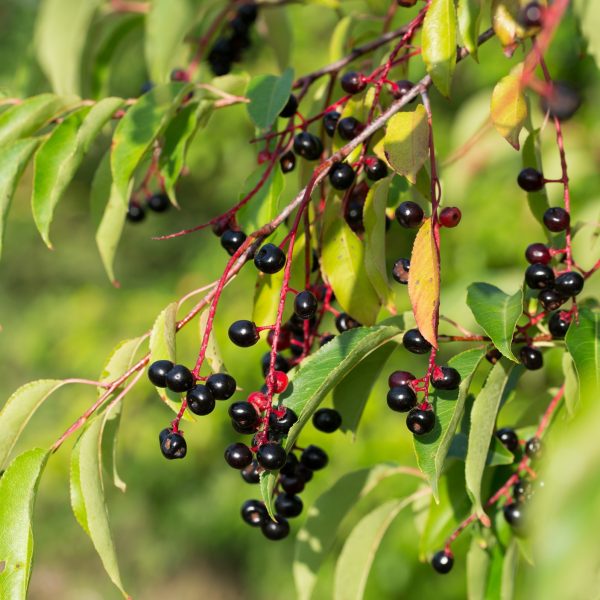
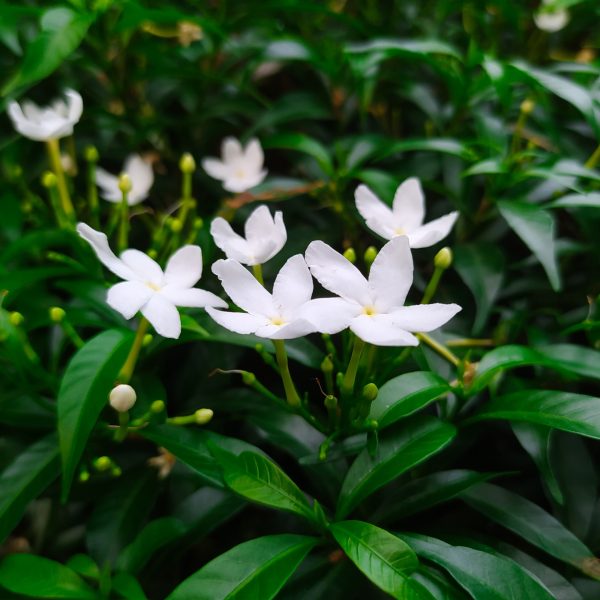













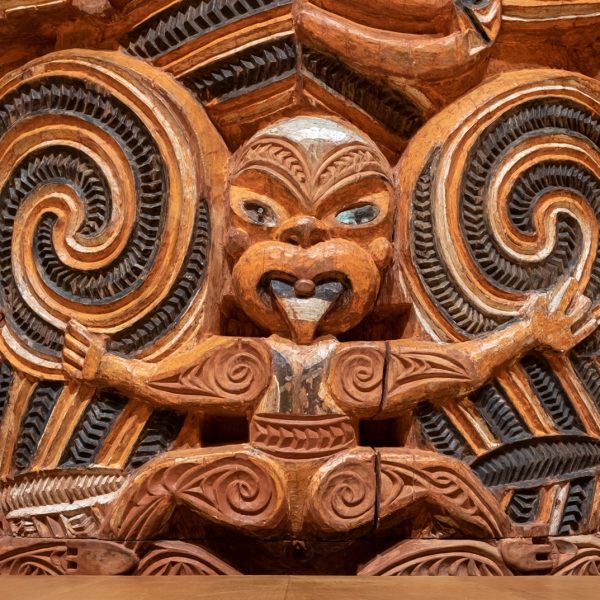
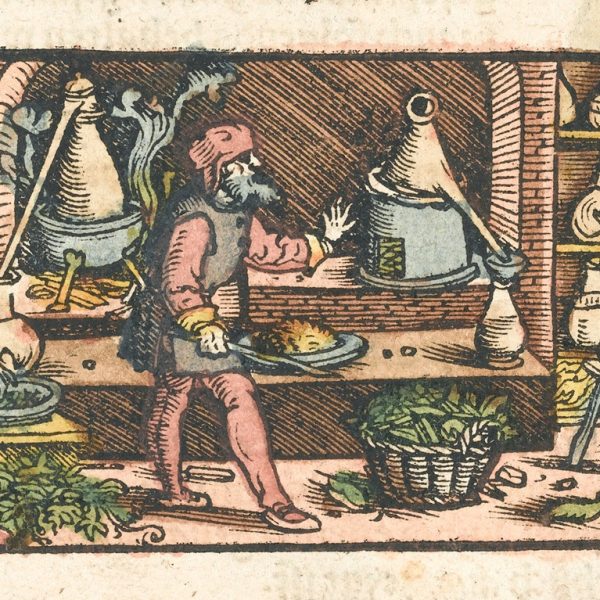
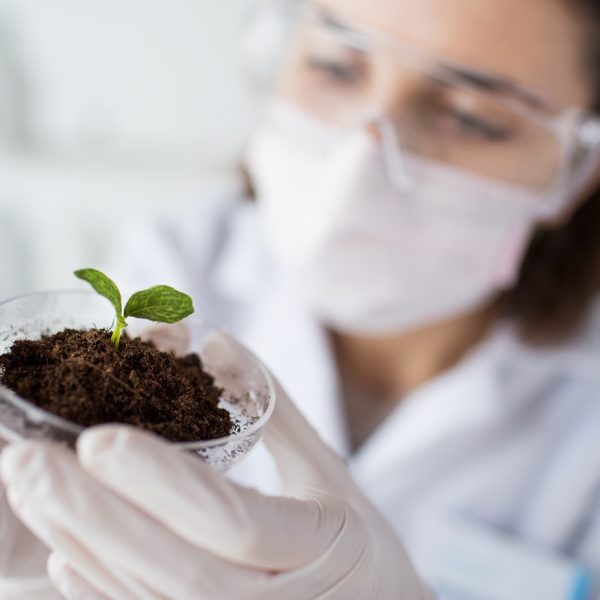










 Cancer
Cancer





